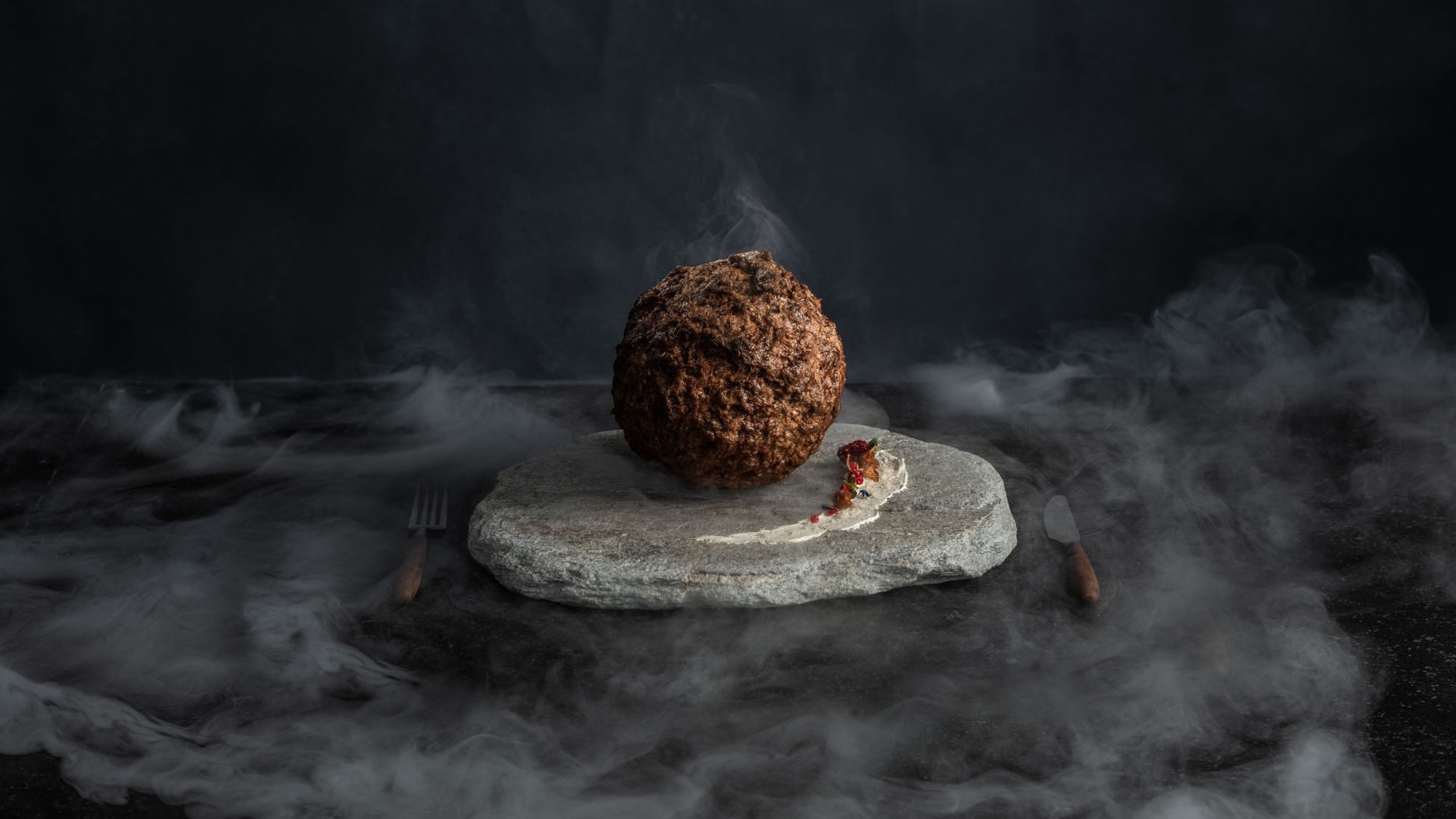

Update 3/31/23: Another food-tech company, Paleo, alleges that they first developed patent pending meat with mammoth myoglobin in 2021, and are now considering legal action against Vow. This post has been updated with their comments, along with a response from Vow
Researchers and ethicists have argued over the how’s, if’s, and should’s of reviving woolly mammoths for years—in the meantime, one startup just reportedly went ahead and cooked up their own version. As first highlighted by The Guardian, an Australian company called Vow has unveiled what it claims to be the first hybrid mammoth meatball made from fragments of the species’ DNA sequence spliced together alongside elephant cells. In doing so, the startup hopes to promote a speedier cultural transition to what could be environmentally friendly, sustainable lab-grown meats while highlighting humans’ impact on species die-off. But another startup is claiming to have developed mammoth myoglobin tech first, and are now considering legal action against Vow.
Industrial animal farming and consumption are widely considered to be some of the largest contributors to greenhouse emissions and water usage. Climate experts have repeatedly urged the importance of transitioning away from this carnivorous mindset towards healthier, sustainable options, but it can often feel like a steep ask for populations so used to their preferred, culturally reinforced diets. While lab-grown meat alternatives are increasingly gaining attention, Vow hoped to draw attention to cutting edge possibilities via resurrecting the iconic Ice Age giant in miniature, meatball form.
[Related: FDA says this lab-grown chicken is safe for human consumption.]
Despite the wild conceit, concocting the mammoth meatball apparently proved to be “ridiculously easy and fast,” said Ernst Wolvetang, a professor at the University of Queensland’s Australian Institute for Bioengineering who worked alongside the cultivated meatmakers. What’s more, it only took a “couple weeks” for Wolvetang’s team to harvest the approximately 20 billion mammoth-elephant meat cells grown within sheep myoblast stem cells.
For author Lincoln Michel, the news came as surprise. “It’s maybe a cliché at this point, but it’s very hard these days for satire to keep up with reality,” he told PopSci. Michel’s 2021 sci-fi novel, The Body Scout, cheekily mentions lab grown cuisine derived from long-extinct animal species against a dystopian, cyberpunk backdrop. “When I wrote The Body Scout, I thought adding mammoth burgers and teriyaki tyrannosaur wings would be a funny comment on the banality of modern capitalism’s vision,” he said. “I didn’t expect to see mammoth snacks a mere two years after publication.”
[Related: How to enjoy fake meat in a way that actually helps the planet.]
Vow already has plans to supply Singapore restaurants by the end of the year with lab-cultivated Japanese quail grown using similar methods. Additionally, the company has reportedly researched over 50 other species to add to their menu, including buffalo, crocodile, kangaroo, and various fish species. Dodo apparently was researchers’ first choice, but didn’t make the cut because they lacked the necessary DNA sequences.
But don’t expect to take part in mammoth taste tests for the conceivable future. As Wolvetang told The Guardian, humans haven’t ingested mammoth protein for thousands of years, so there’s no telling how immune systems would handle such a dish. Instead, the meatball is meant more as a representation of what the cultivated animal protein industry hopes to achieve. If the same methods continue to be applied to commonly eaten animals, then entirely new avenues for nutrition may become available to consumers. As one researcher explained to The Guardian, “By cultivating beef, pork, chicken and seafood we can have the most impact in terms of reducing emissions from conventional animal agriculture.”
Meanwhile, Paleo—a “precision fermentation company” based in Belgium—alleges Vow’s claims as the first to develop meat with mammoth myoglobin is false. “When we learned about [Vow’s announcement], we were surprised,” Hermes Sanctorum, CEO of Paleo, said in a statement provided to PopSci. “We sent out a press release nine months ago to announce that we developed the exact same mammoth protein (myoglobin), based on our fundamental research and innovation.”
Paleo representatives claim to have reached out to Vow prior to their product announcement. Vow allegedly responded by saying its mammoth meatball “was not food,” and dismissed Paleo’s concerns. “When Vow claim that no one has tasted mammoth myoglobin, this is simply not true,” said Sanctorum, adding that, “We developed the mammoth myoglobin and we tasted it in our lab.”
Sanctorum describes the mammoth protein’s “aromatic profile” as “stronger” than other species, meaning it both “smells and tastes meatier” with a “more vibrant” red coloring. Paleo claims it submitted patent applications that have been under review and available publicly for competitors nearly a year ago. In an email to PopSci, a representative for Vow denied the accusations, stating their mammoth meatball was “conceived, developed and created entirely by the hard work and ingenuity of Vow’s own scientists [and collaborators] and using a combination of publicly available genetic data and Vow’s own proprietary production processes,” and stated it will take “appropriate” responses to maintain “its reputation, its innovations, and its people.”
